Cross all borders: territorial disputes in Latin America
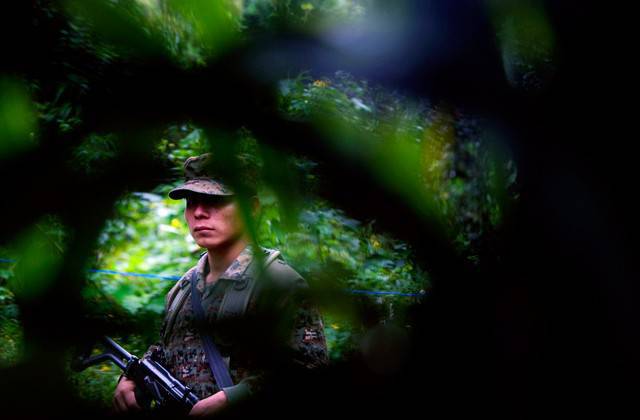
Belize, Guatemala, Colombia, Venezuela, Guyana - there are probably no countries on the continent that have no claims on their neighbors' lands.
Compared with other continents, in Latin America, the states did not experience large-scale consequences of interstate conflicts: the most bloody war in the 20th century took place in 1932 — 1935 between Paraguay and Bolivia and claimed “only” a hundred thousand lives. This is one of the reasons why, in contrast to Europe in Latin America, a system, like the Yalta type, about the inviolability of borders and the principles of peaceful settlement was not formed. In the Western Hemisphere, there are still many unresolved territorial disputes and mutual claims.
Belize and Guatemala
One of the longest territorial disputes continues over 150 years between Belize and Guatemala. Guatemala claims the territory from the Sarstun River to the Sibun River with a total area of 12,8 thousand square kilometers, which is half of the territory of Belize.
For a long time Belize was the subject of colonial rivalry between Spain and Britain: until the 18th century, English settlements existed on the island and British laws operated, but Britain did not declare sovereignty over the region. From the 1940s, Belize was informally called British Honduras. It was only in 1862 that the British Empire officially declared British Honduras its colony, putting in office an appointed vice-governor in place of the superintendent elected by local residents.
Guatemala gained independence from the Spanish Empire in 1821 and did not recognize British Honduras until the Anglo-Guatemalan treaty of 1859, according to which Belize was recognized as British ownership, and in return, the UK promised to finance the construction of the road connecting Guatemala and the Belize city of Punta Gorda. However, the road was never built, which allowed Guatemala in 1940's to declare the non-fulfillment by the British side of its obligations. This led to Belize becoming considered part of Guatemala under the 1945 constitution of the year.
In turn, after receiving independence in 1981, Belize stated that it did not participate in the signing of the treaty between England and Honduras, and therefore was not obliged to comply with it. In the same year, the Belize government applied to the International Court of Justice, demanding recognition of the boundaries in the 1859 agreement of the year.
Guatemala’s Foreign Minister Rafael Castillo Valdez and Belize’s Prime Minister George Price 11 in March 1981 signed an agreement to resolve the territorial conflict, according to which Belize is recognized as independent, but Guatemala receives certain powers in the region, including the right to free movement in the country's Atlantic waters and right to the construction of pipelines. Until 1992, a British armed contingent remained in Belize to prevent military intervention.
However, in Guatemalan society, statements on Guatemala’s right to Belize continued at an informal level. At the end of his term as president, Alvaro Arsu declared in October 1999 of the year that Belize should give up just under half of its territory south of the Sibun River.
At the beginning of 2000, conflicts on the border escalated: in February a police patrol shot a Guatemalan citizen in a forest reserve in Belize. Shortly afterwards, an armed clash occurred in Toledo County. In order to prevent the escalation of the conflict, the countries announced negotiations with the mediation of the Organization of American States, and in March 2000 agreed to create a border neutral zone.
7 September 2005 between the countries signed an agreement on the "Establishment of measures to create mutual trust", under which a provision was established on the conduct of a dialogue to resolve the territorial conflict. Later a special treaty was signed, the purpose of which is to establish a solution at the international level that would end the territorial issue.
October 6 2013 in both countries was to pass a referendum on the ownership of the disputed territories. It was planned that the population of the countries would be asked about the consent to transfer the authority to resolve the territorial dispute to the International Court of Justice, whose decision would be binding. However, Guatemala unilaterally canceled the referendum, citing the Belize amendments to the referendum law, according to which it is considered valid only if more than 60% of voters participate. According to the Guatemalan side, this creates unequal conditions in the voting of both countries, since there is no turnout in Guatemala.
Colombian intervention
One of the largest contemporary territorial conflicts in Latin America threatened to escalate into a full-scale war after Colombian government forces crossed 1 in March 2008 to the border with Ecuador and the Air Force bombed the camp of the left-wing rebel group of Revolutionary Armed Forces of Colombia (FARC). As a result of the invasion, 17 people were killed, including one of the rebel leaders Raoul Reyes.
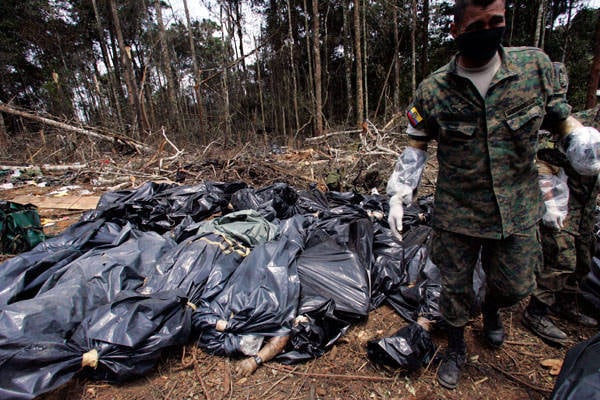
The Colombian government did not agree on a special operation with Ecuador. The fact is that Colombia (as well as with the United States and the European Union) considers the grouping a terrorist one, and therefore it viewed its actions as an ordinary counter-terrorism operation. Moreover, according to the Colombian authorities, during the special operation documents were obtained confirming the involvement of Venezuela and Ecuador in the financing of the FARC (Venezuela and Ecuador consider the FARC as a legitimate political force and do not prevent its members from finding their territory).
Immediately after the attack, Ecuador accused Colombia of violating its sovereignty and broke off diplomatic relations with it. The Ecuadorian ally Venezuela, who sent out of the capital of Colombian diplomats and sent ten battalions to the border with Colombia, did not stay aside. Venezuelan then-President Hugo Chavez expressed widespread support for Ecuador and noted that a similar incident in Venezuela itself would have led to war.
Colombian President Alvaro Uribe 4 March 2009 of the year announced that his country is filing a lawsuit against the International Criminal Court on charges of financing terrorism and genocide against Hugo Chávez. In response, Venezuela announced the closure of the land border with Colombia, and Chavez himself described the actions of the Colombians as a “war crime”.
However, none of the parties was interested in unleashing a full-fledged war that threatened to turn into the largest geopolitical crisis in the region over the past decades. The Colombian authorities publicly declared their commitment to the ideals of peace and order in the region and withdrew the troops from the border, proposing to settle the differences through diplomacy.
At the summit of the South American States 8 in March 2008, the presidents of Ecuador, Venezuela and Colombia signed a declaration on ending the diplomatic crisis. The document noted that the Colombian side apologizes for the violations of the borders of Ecuador during the special operation against the FARC. Although the adopted agreement did not lay the foundation for stability in the region, it helped prevent armed conflict and continued negotiations at the diplomatic level.
Fight for access to the sea
The dispute over the territorial affiliation of the coastal section of the Atakam desert, rich in saltpeter and opening to Bolivia’s seafront, dates back to the beginning of the 19th century, when sovereign states took the place of the vice-kingdoms of the Spanish Empire. The ambiguous status of this territory as part of the Spanish Empire gave Chile a reason to start claiming it immediately after Bolivia declared independence in the 1825 year, and subsequently seize the controversial sector during the Second Pacific War of the 1879-1883 years. The loss of access to the sea, which was very painfully perceived in Bolivia, has since been invariably discussed during election campaigns and becomes the subject of anecdotes in Chile.
In 1975, the Chilean dictator Augusto Pinochet volunteered to fix historical injustice and return to Bolivia a narrow strip of land running parallel to the Peruvian border in the very north of Chile in exchange for Bolivian territory of the same size. However, historically, the territory proposed by Pinochet did not belong to Bolivia, but to Peru, and could not be returned to any other country under the terms of the Ancon Treaty of 1883. The impossibility of such a transfer was insisted by the Peruvian dictator Francisco Morales and, in turn, proposed making the port of Arica a territory controlled by three states, which Chile did not agree with.
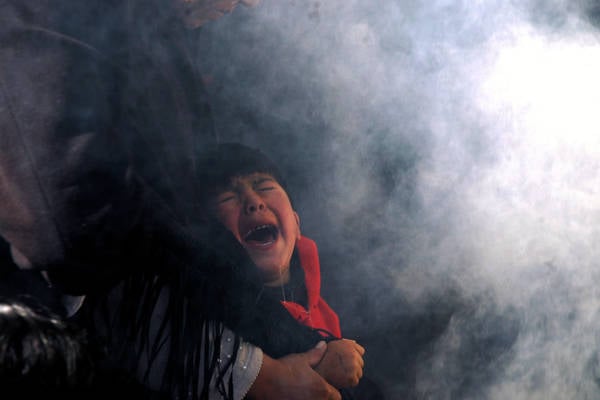
Chile’s economic growth was largely ensured by access to the very saltpeter mines that Bolivia had lost. After an unsuccessful attempt by Pinochet to resolve the conflict, Bolivia and Chile retain only consular relations. The dispute broke out with a new force during the "gas war" in Bolivia 2003-2005 - mass riots that began because of the authorities' decision to export gas from recently discovered fields through Chile instead of building a processing plant in Bolivia. Peru then made its own proposal and pledged to give Bolivia a special economic zone for 99 years and the port of Ilo in full possession. Countries made an agreement in 2010.
Bolivian President Evo Morales, who spoke on the opposition’s side against the construction of a gas pipeline in Chile during the “gas war”, recently proposed closing negotiations with Chile and resolving a dispute at the UN International Court of Justice. At the same time, Bolivia appeals not to international treaties, but to the promises of Chile, made during the negotiation process, but not fulfilled. At the moment, Bolivia is one of two South American countries (along with Paraguay), landlocked.
Colombia and Nicaragua
For decades, Nicaragua and Colombia, divided by the Caribbean Sea, have continued to dispute over the ownership of the volcanic islands of San Andreas, Providencia and the Santa Catalina archipelago. Despite the territorial proximity to Nicaragua - one hundred and ten kilometers from the nearest coast against seven hundred and twenty from the northwestern coast of Colombia, most of the time they were ruled by the South American republic. Before 1819, both states were part of the Spanish viceroy of New Granada, which gave grounds in the future to declare claims to the islands. However, after independence, the islands voluntarily joined the Republic of Colombia and became part of the Magdalena department. More than a hundred years later, as a result of the Esguerra-Barcenas treaty in 1928, Nicaragua recognized the archipelago and all adjacent marine territories as members of Colombia, but the final point in the conflict was only at the beginning of the 21st century.
The territorial dispute over these islands arose again after the Sandinistas (socialists) came to power in Nicaragua in 1980, who declared the contract to be unlawful and without legal force. According to them, the document was signed during the occupation of Nicaragua by American troops, thus making it imposed by another state and not meeting national interests. In response, Colombia stated that the treaty was ratified in 1930, when there were no longer any foreign troops in Nicaragua.
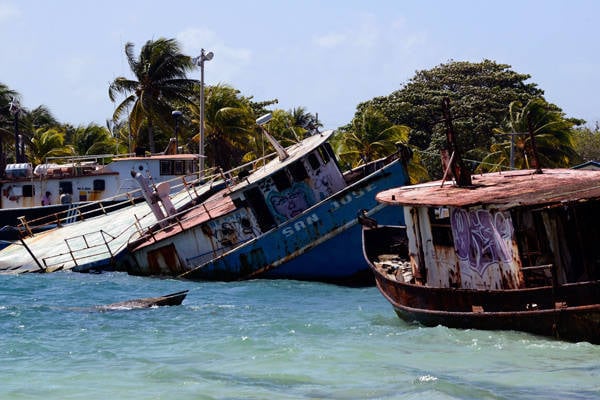
In December 2001, Nicaragua appealed to the International Court of Justice, which, as a result of a six-year trial, recognized the right to sovereignty over the largest contested islands over Colombia. Nicaraguan President Daniel Ortega harshly disagreed with this decision, calling the policy of Colombia imperialistic and expansionist, and urged the military of his country to be ready for an armed conflict. At the same time, the initial decision did not explain the status of the sea borders and many small islands, also located in the waters of the Santa Catalina Archipelago.
In November, the International Court of Justice 2012 secured the status of all disputed islands to the Colombian side, at the same time changed the maritime boundary and expanded the territorial waters of Nicaragua in the region east of the eighty-second meridian. By this decision, the court provided Nicaragua with access to oil and gas deposits previously found in the marine zone, as well as the fishing resources of the region.
The verdict was well received by the authorities of Nicaragua, President Ortega even declared it a national victory. However, Colombia refused to comply with the decision of the court, which caused a political crisis in the country and a drop in the rating of the current president, Juan Santos. In September, 2013 announced that a border change violates the country's constitution and cannot be carried out without parliamentary approval and ratification by the president. Thus, the territorial dispute remains unresolved to this day.
Venezuelan-Guyanese conflict
The dispute over the territorial identity of Guyana Essequibo is rooted in the colonial past. Under the Treaty of Münster, 1648, which recognized the independence of the Netherlands from the Spanish crown, the Dutch colonies east of the Essequibo River in South America also gained independence from Spain. Subsequently, the Dutch settled on its western shore, the borders were never formalized, and in 1814, these territories came under British control. In 1811, Venezuela proclaims independence, and since then it has been trying to include Guyana Essequibo. On official maps of Venezuela, this territory is shaded as controversial.
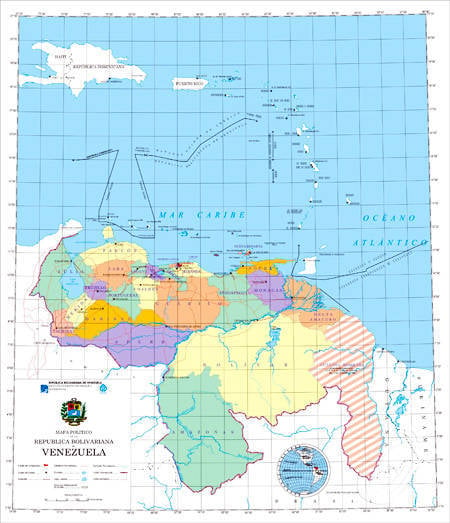
The diplomatic crisis erupted in 1895, when Venezuela, with the help of an American lawyer, tried to prove that the actions of Great Britain contradict the Monroe Doctrine of the United States in 1823, recognizing the American continent as a zone closed to interference by the European powers. An international tribunal was convened (two arbitrators were US citizens, two were subjects of the British Empire, and Fyodor Martens was a subject of the Russian Empire), which, however, decided in favor of the UK and recognized its right to 90% of the disputed territory. England also received all the gold mines, but had to give Venezuela a strategically important area at the mouth of the Orinoco River. Venezuela tried to challenge this decision of the tribunal, but to no avail. Some lawyers, however, agree that there were violations in the work of the tribunal and that Great Britain and Russia could conclude a backroom deal.
In the 1966 year, under the Treaty of Geneva, Guyana gained independence and became the legal successor of the British Empire. According to the documents, the status of the disputed territories was to be determined by a specially convened commission, however, the parties did not agree to recognize the validity of the decisions of the international tribunal 1899 of the year. Guyana insisted that Venezuela should have first proved the nullity of its rulings.
The most serious danger to the territorial integrity of Guyana was the Rupununi uprising in 1969, which was quickly suppressed. The Venezuelan authorities denied support for the uprising, although some of its participants found refuge in the country and subsequently received citizenship, emphasizing the fact that they were born in the territory of Guyana Essequibo, rightfully owned by Venezuela. In 1970, countries signed a twelve-year moratorium on Venezuela’s demands for the return of this territory. In 1983, the decision was made not to extend it, but the diplomatic relations of the two countries, despite the conflicts that occur from time to time, remain.
Information